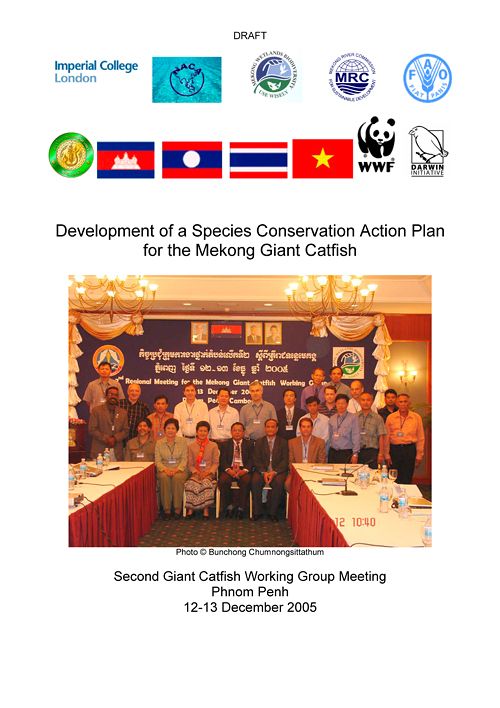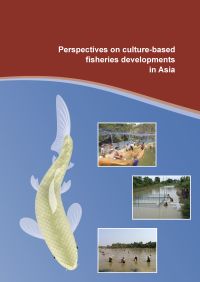Development of a species conservation action plan for the Mekong giant catfish
22 April 2008 | 1046 Downloads | .pdf | 1003.74 KB | Cambodia, Freshwater finfish, Genetics and Biodiversity, Lao PDR, Thailand, Vietnam
This is the report of the Second Mekong Giant Catfish Working Group Meeting, held in Phnom Penh 12-13 November 2005, under the project Development of a conservation strategy for the critically endangered Mekong giant catfish.
The Mekong giant catfish, Pangasianodon gigas, one of the world's largest freshwater fish and a charismatic animal revered throughout the Mekong region, is considered critically endangered (IUCN Red List 2003).
A range of conservation initiatives for the giant catfish are being carried out by organisations including the fisheries departments of Cambodia, Laos and Thailand, the Mekong River Commission, the UNDP/IUCN/MRC Mekong Wetlands Biodiversity Project, the Network of Aquaculture Centers in Asia-Pacific, WWF Indochina, and Imperial College London.
A Species Conservation Action Plan joint workshop was held in Phnom Penh, Cambodia on December 12-13 2005. The purpose of the workshop was to review existing knowledge on Mekong giant catfish, identify future conservation and research priority activities, and to continue the joint planning process aimed at developing an overarching conservation strategy for the Mekong giant catfish.
Although knowledge of the ecology of wild Mekong giant catfish is lacking, data does exist on giant catfish breeding, growth, past and present abundance, and distribution. This knowledge is often in local language literature; some has been translated and published in English-language documents.
Knowledge about the Mekong giant catfish is increasing, as several giant catfish-related projects move forward, including projects aimed to assess and improve breeding techniques, better understand population genetics, examine migratory behaviour, and determine true distribution and population status.
A conservation vision has been developed emphasising the importance of "maintenance of a viable wild population of Mekong giant catfish, a genetically representative captive population, and critical habitats and ecosystem processes". This vision will be the basis for the development of a draft Species Conservation Action Plan.
The Species Conservation Action Plan is part of an overarching, basin-wide conservation strategy for the Mekong giant catfish. This strategy aims to achieve the greatest possible effectiveness of the conservation activities of all stakeholders. This strategy is based on information exchange and coordination of activities conducted by different organisations; effective use of research to resolve key uncertainties, and effective conservation planning. At the core of this strategy is a series of joint workshops, interspersed with specific research, conservation, and outreach activities by contributing organisations.
Key workshops in the conservation strategy planning process are a joint inception workshop held in Bangkok in August 2005, a species conservation action plan (SCAP) workshop held in Phnom Penh, December 2005; a quantitative assessment workshop to be held in Vientiane in August 2006, and a conservation strategy workshop to be held in Bangkok, December 2006.
Creative Commons Attribution.

